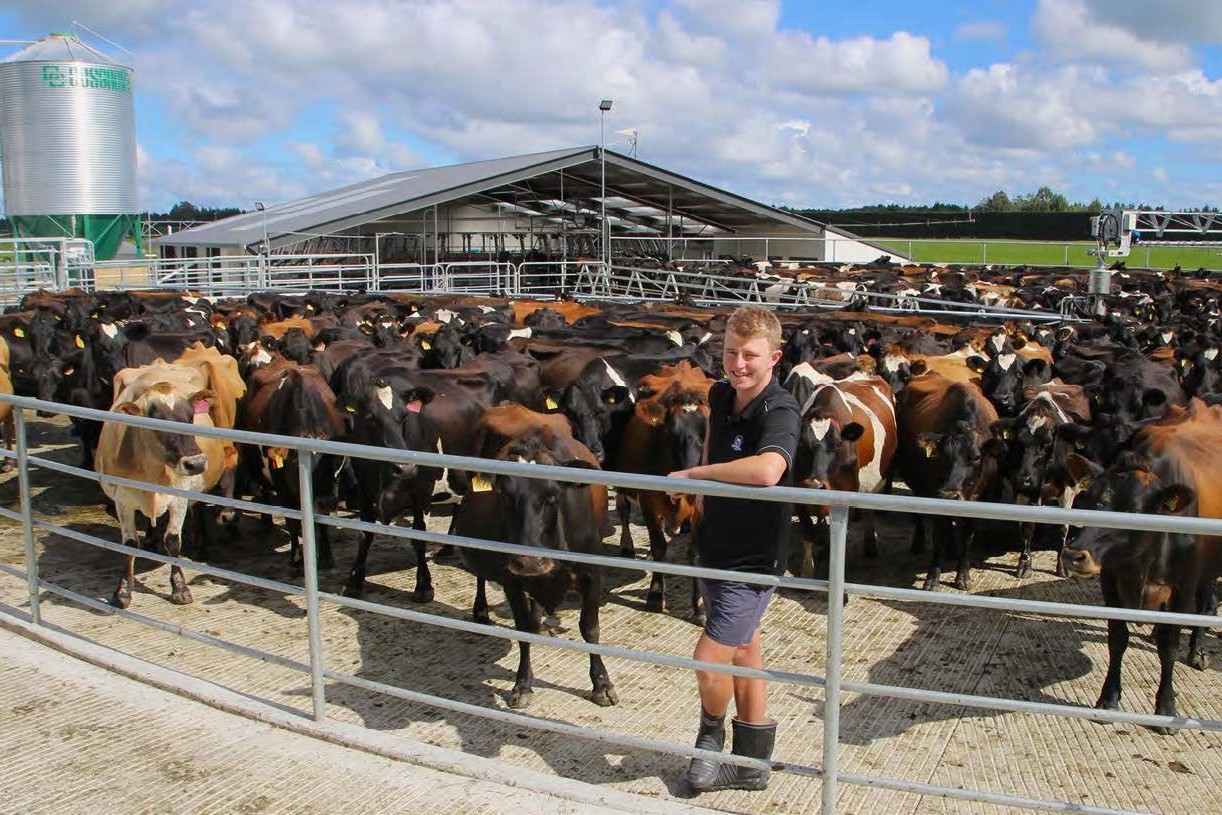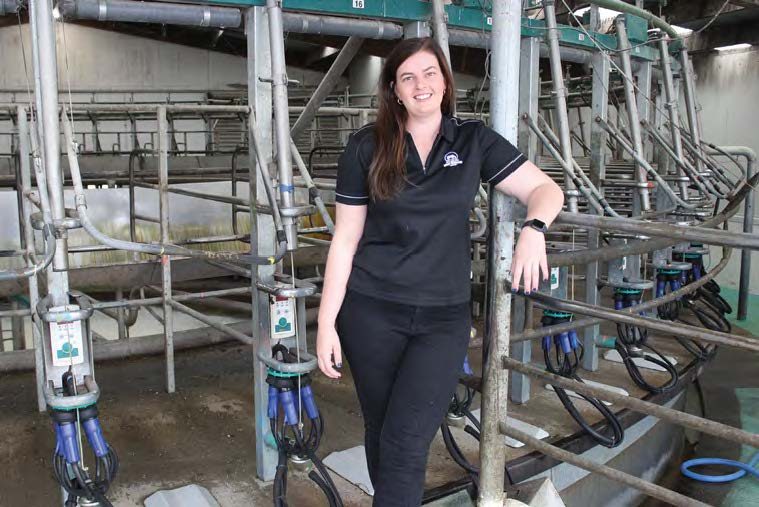People who have work experience in other fields are those most likely to want to move into agricultural work, Phil Edmonds writes.
Contrary to popular perception it is not school leavers, tertiary graduates or beneficiaries who provide the biggest pool of talent for the primary sector. It is career-changers.
The finding, based on data from SatisticsNZ, was presented at a recent GrowingNZ conference by industry consultant, Scarlatti director Adam Barker.
The data shows that over the past 10 years those looking for a career move have entered the sector more so than those from all other backgrounds. As expected, immigrants have proportionally increased as a source of workers over that time (mostly in dairy farming), but career-changers still dominate.
Curiously, however, this does not reflect the investment that has been made in targeting potential employees.
‘If you are thinking about comparative sectors, you can see quite different ways in which employers manage younger new entrants.’
“The collective focus of those engaged in lifting the attractiveness of the primary sector has weighed heavily towards other groups,” he says. “There has been a lot of time spent working with people on how to engage with schools and tertiary institutions, with government agencies on how to influence immigration policy, and with beneficiaries. But up until very recently, few have been interested in career-changers.”
The available data has enabled a profile to be built of career-changers, and the key traits are people slightly older than those typically targeted as well as those who are into their 50s and in some cases their 60s.
“The success factor we use is how long can we keep people in a job. And if you analyse who is most likely to survive, the sweet spot is someone in their 30s. This compares to the 20-29 years old grouping – who can still be somewhat fickle.”
Employee retention is what the industry is striving for, and the financial importance of this is noted by No8HR director Lee Astridge, who says there is a cost to your business if you don’t keep an employee for three seasons.
With retention in mind, Astridge suggests the farming sector has possibly paid less attention to the value career-changers can bring to a farming business because of over-inflated expectations of what the likes of school leavers are able to contribute.
“If you are thinking about comparative sectors, you can see quite different ways in which employers manage younger new entrants. An electrician, for example, who employs a school leaver as an apprentice will know they will be a cost to their business for the first 12-24 months, and there will be times where they make big mistakes. But in farming we somehow think that is different. Broadly we have a higher expectation of the value young people will be able to deliver more quickly than what is realistic.”
People who have already had some work experience, those in their mid-20s for example, just have different capacities in terms of appreciating the work environment. Astridge says. “I’m not sure in farming we have developed a good enough understanding of the differences.”
Not surprisingly, the single biggest area of work that career-changers come from is in the broader primary sector, but there are still two-thirds of new entrants coming from other industries – more often manufacturing, construction, administrative support and retail trades.
Barker says that given their importance as the key source of staff, it is important to know how to effectively target career-changers.
“In a nutshell, you’d be looking for someone in their 30s. They probably already live in a rural location and have a stable work history.”
Interestingly, however, former training is not considered of relevance – there is almost no correlation between training and their success in a transition to primary sector work.
The data shows that being from a rural location is the most important factor in success, but it still only makes someone twice as likely to succeed and stick around for a while. And those who had parents as dairy farmers were only about 25% more likely to stay within the industry than the average “There is no factor that suggests someone is 10 times more likely to succeed, or even five times”.
GrowingNZ chief executive Michelle Glogau, whose organisation funded the research, says the work on career-changers shows there is another group which can bring a whole lot of qualities that you wouldn’t necessarily get with school leavers, who have been the organisations’ initial focus.
“We are starting to look at some of the trends in the findings. There are lots of subsets within the broad findings including differences between people looking to change careers within the primary sector, and those coming from outside.
“We want to work out which particular groups are of most interest to us, and then understand what kinds of things we need to have in place to make that those contemplating changing careers successful. For example, if you are talking about someone coming from a city environment to a rural setting there may need to be additional support structures in place – not feeling isolated in a rural community.”
Barker says that in most cases, income provides the first sign of interest. However, an analysis of income earned before and after a career change does not identify anything that wouldn’t be expected. The trajectory of rising incomes is consistent with age and experience.
“What is more compelling is the potential for those entering the primary sector to start their own business.
“The primary sector is good at creating employer and self-employed positions. And career-changers seem to be particularly good at getting into those positions. If we want to track people who are interested in owning their own business and being in control of their own destiny, there is a really strong message here.”
Astridge agrees.
“The main benefit farming has to offer career-changers is that if you are smart and prepared to work hard you can progress into managerial and quite senior levels in farming businesses much quicker than you can in other industries.
“Farming as an industry is made up of very small businesses. As an industry we don’t maximise this story enough, as well as the potential to build transferrable skills. Once you’ve been in a managerial role, that is a readily transferrable skill, even to go back out of the industry.
“If the industry could capture people for 10 years and develop them as 2ICs and managers, then that 10 years is really valuable to the farming industry. And its valuable to them, because there are not many places where they could work for 10 years and reach managerial roles to the extent they could in farming.”
One other attraction Astridge believes is worth promoting to career-changers is the potential to break the rent cycle.
“A farm worker’s total remuneration, if you include the market rental on a house is a comparatively good package. I think the industry gets too distracted by the wrong issues – those that might be considered negative attributes to farming. However, the people you want to attract are those that want to work hard, learn and invest in themselves. And with the accommodation benefits, you can say to a motivated person, if you work for five years, you can save a deposit for a house.”
Among the possible avenues that could be explored to target career-changers, Barker says more could be done to appeal to ‘lost’ 20-25-year-olds – those who have work experience and for whatever reason are becoming less convinced they are doing the kind of work they want to. These are early career-changers, whose expectations of a job or career have not worked out the way they anticipated.
Other potential areas the primary sector could invest in are ‘taster’ opportunities for people to experience what the work is like. These opportunities are available for school leavers and tertiary graduates, but less so people from other work backgrounds. Barker also says the primary sector could make more of its networks to facilitate this. “The primary sector is a collaborative industry, by and large, and that should be used to its advantage.”
Glogau says the research findings have already contributed to a change in thinking around the marketing efforts GrowingNZ is undertaking to boost the awareness of employment opportunities in primary industries. She says their marketing is now more inclusive and less focused on school leavers. It features profiles of people who have taken a different route to entering the sector and this creates a more diverse appeal.
Career-changers are likely to become a more important source of recruits as technology changes primary sector roles and the work becomes more skills-based, Glogau says.
While the sector’s immediate workforce shortages are onfarm and to some extent manual-focused, a potential source of workers who can bring skills obtained from jobs outside the sector will become increasingly attractive to employers.





